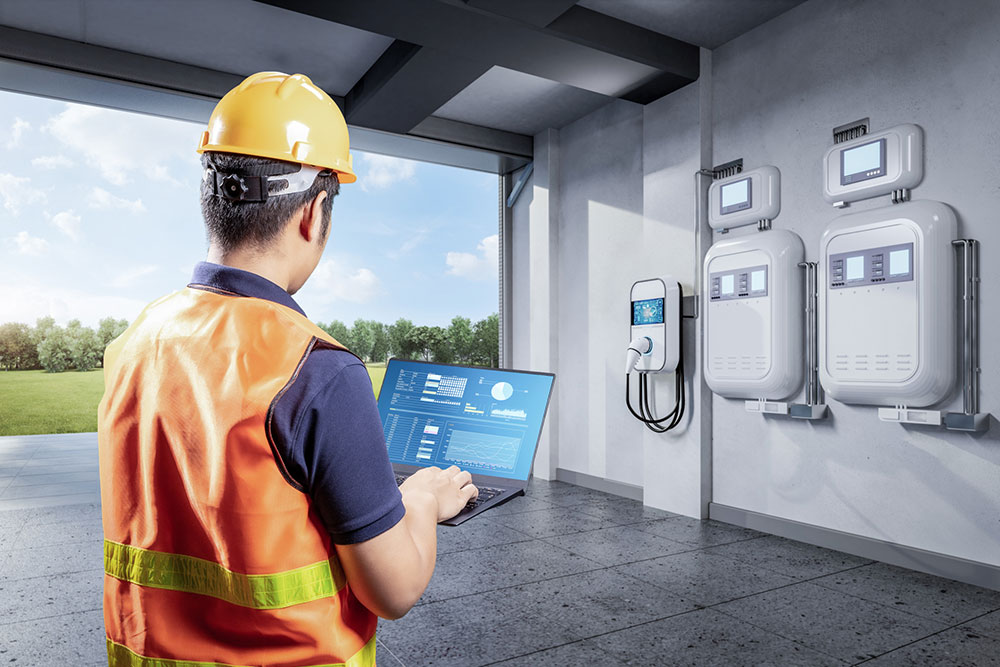
As electric vehicles (EVs) become more prevalent on the roads, the need for convenient and accessible EV charging stations is growing. However, for many, the process of installing these stations can seem daunting. To shed light on the subject, we’ve compiled a list of frequently asked questions about EV charging station installation. Whether you’re a business owner, property manager, or simply an EV enthusiast, this guide will provide answers to common queries and help you better understand the ins and outs of this rapidly evolving technology.
1. Why Should I Install EV Charging Stations?
Installing EV charging stations can attract more customers, tenants, or employees, depending on your situation. It demonstrates your commitment to sustainability and can be a valuable amenity in today’s eco-conscious world.
2. What Types of EV Charging Stations Are Available?
There are three primary types of EV charging stations: Level 1 (120V), Level 2 (240V), and DC fast chargers. Level 1 is typically for home use, Level 2 is common in public spaces, and DC fast chargers are ideal for quick charging at highway rest areas.
3. What’s the Difference Between Residential and Commercial EV Charging Stations?
Residential charging stations are designed for home use, while commercial stations are intended for businesses, public areas, and workplace charging. Commercial stations are more robust and have additional features like payment systems.
4. How Do I Determine the Best Location for Charging Stations?
Consider factors such as visibility, accessibility, proximity to power sources, and the needs of your target audience when selecting the best location for your charging stations.
5. Do I Need Special Permits for EV Charging Station Installation?
The permitting process varies by location, and you may need electrical, zoning, and building permits. It’s essential to check with your local authorities to understand specific requirements.
6. What Are the Electrical Requirements for EV Charging Stations?
The electrical requirements depend on the type of charging station. Level 1 stations can be plugged into a standard 120V outlet, while Level 2 and DC fast chargers may require dedicated circuits and higher voltage power sources.
7. How Long Does It Take to Install EV Charging Stations?
The installation timeline varies based on factors like the station type, electrical work needed, and the permitting process. Simple installations can take a few hours, while more complex projects may require weeks or months.
8. What Maintenance Is Required for Charging Stations?
Regular maintenance includes inspecting connectors, checking for damage, cleaning, and ensuring the payment and communication systems are functioning correctly. Routine upkeep helps keep stations operational and user-friendly.
9. How Much Does It Cost to Install EV Charging Stations?
The cost of installation varies widely based on factors like the station type, location, electrical work, and any necessary infrastructure upgrades. It’s advisable to obtain quotes from qualified installation providers.
10. Can I Offer Charging for Free?
Yes, you can offer free charging at your discretion. However, you may also choose to charge a fee for the use of your stations to recover installation and electricity costs.
The installation of EV charging stations is a forward-thinking move that benefits both businesses and communities. By addressing these frequently asked questions, we hope to demystify the process and encourage more property owners, business managers, and individuals to contribute to the growth of sustainable transportation. Embracing EV charging station installation not only aligns with environmental values but also serves as a valuable investment in the future of transportation and energy. Installing EV charging stations can attract more customers, tenants, or employees, depending on your situation. It demonstrates your commitment to sustainability and can be a valuable amenity to your employees and customers.